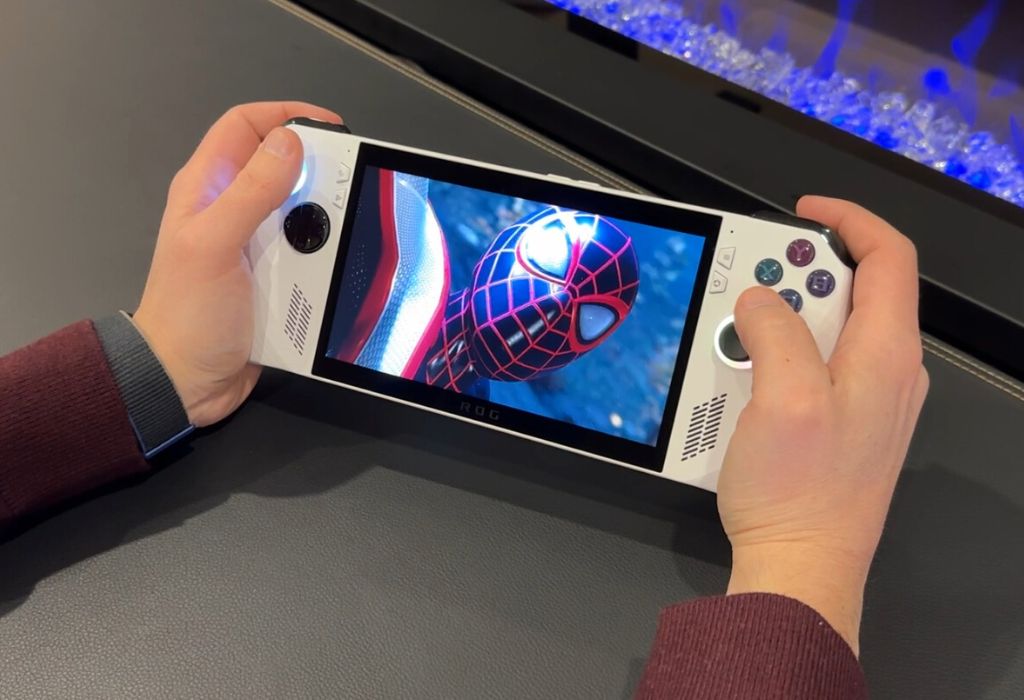
If you are looking for a versatile, handheld PC gaming experience, the ASUS ROG Ally is one of the best options on the market. Over the last few months, I have been using the Ally for the lion’s share of my gaming and have come away extremely impressed. The hardware delivers a near full PC experience in a portable, well designed form factor. The ability to run PC games available on the Windows 11 platform makes it a clear standout. This includes thousands of titles across the Steam, Epic Game Store, Xbox Game Pass, cloud gaming services libraries, and beyond. In this review, I put the ROG Ally through its paces and share my impressions of the device. Let’s dive in and see all the Ally has to offer from hardware, performance, software and more.
Unboxing and setting up the ROG Ally
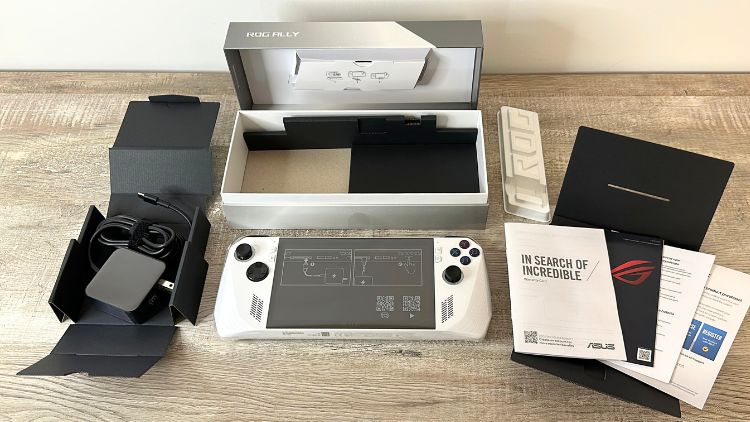
The unboxing process for the ROG Ally is simple and straight forward. In the box you receive the device itself, a 65W charger, user manual, warranty info, and a plastic stand. Getting everything out of the box is quick and easy, the only thing that takes time is updating the device. It runs on Windows 11 and requires some patches and drivers to be installed with initial setup. However, this isn’t a major issue, as the updates are done automatically, it just takes a lot of time. The Ally has a plethora of ways to customize its performance after the basic configuration is complete. I’ll explore this later in the review while discussing the “Armory Crate” software. For now, let’s look at what’s “under the hood” with the device.

ASUS ROG Ally hardware overview
The Ally is a versatile handheld PC offering a wide variety of experiences on the go. From visuals, sound, and overall specs the Ally offers a balanced combination of hardware ready to play whenever and wherever you are. I think that’s what I enjoy most about it: the Ally is a “self-contained” gaming console that can also be hooked up to a monitor and Bluetooth accessories and offer a full-fledged PC desktop experience. Let’s look at all the different features the device has to offer:

A bright, vivid display
The Ally has a 7-inch 1080p 120Hz LCD panel that is bright and vivid. It has an “anti-glare” coating that reduces reflections, and it keeps things looking pristine. OLED displays are all the rage these days, and rightly so, as they offer punchy, vivid visuals. But, in a side-by-side comparison with my Nintendo Switch OLED the Ally’s LCD screen looks fantastic and just as punchy. The display also supports adaptive sync, which means that it can adjust its refresh rate according to the game’s frame rate. This results in a smoother and “tear-free” gaming experience. I found games heavy on action looked excellent in motion, especially at 60Hz. Games that offered 120Hz refresh rate looked great too, but only marginally better on the smaller screen.

A sleek, modern design
The Ally has a comfortable and ergonomic design that is easy to hold and use. Although the device is large, it’s also light, weighing only 608 grams or 1.34 lbs. It doesn’t take up much room or add a lot of weight in a bag or briefcase. For comparison, it’s larger than a Nintendo Switch but it’s easy to take on the go. It’s also so light that I found it easy to hold for longer gaming sessions.
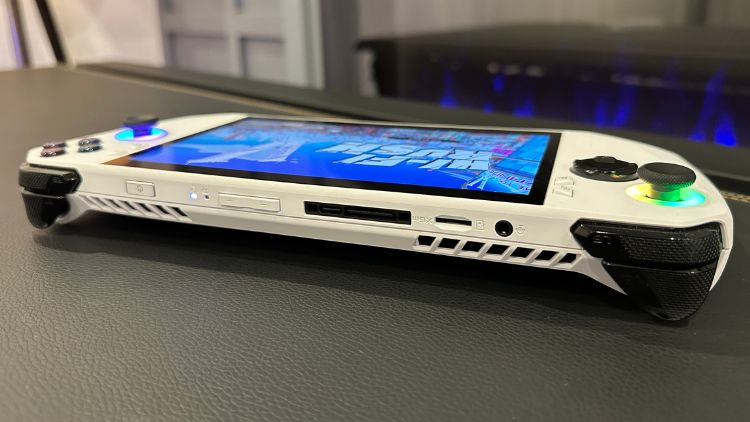
ROG Ally’s I/O options and indicators
In terms of inputs, the Ally has a 3.5mm audio jack, ROG XG Mobile Interface, USB-C port, and a UHS-II microSD card reader. Along the top of the device, you’ll also find the power button (which doubles as a fingerprint scanner), volume rocker, two indicator lights for power and charging.

A mini lightshow in your hands
One of the most striking features of the Ally’s hardware design is the RGB light rings around the analog sticks. They look great and are customizable allowing you to adjust the colours, display patterns and brightness. The only downside is they are also a bit too bright, even at the lowest setting, which can be distracting in low light conditions. However, it’s a minor issue that does not affect the overall gaming experience as you can opt to turn off the lighting completely.
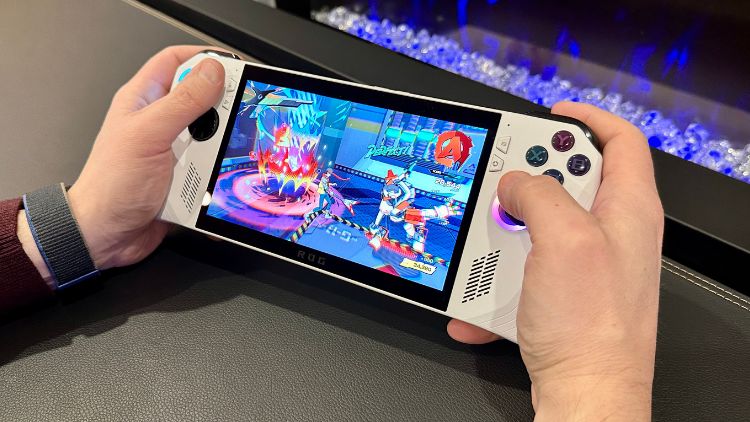
The Ally’s gaming controls
The device has a full set of gaming controls, which include two offset analog sticks, a D-pad, four face buttons, four shoulder buttons, and two rear buttons. Overall, the controls are well-placed and responsive. They can also be customized using the included Armoury Crate software if you wish to change things up. The only downside that I experienced is some of the face buttons (A, B, X, and Y) have a little too much play in their movement.
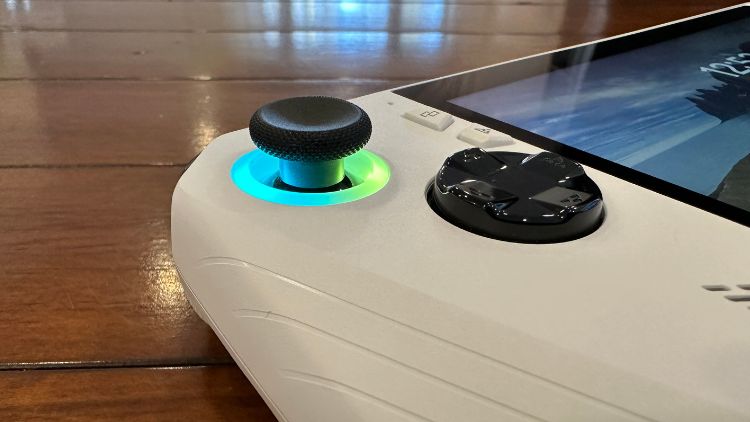
I also found myself accidentally pressing the rear macro buttons on the back of the Ally. To prevent this, I either unassigned them or used them for things like image capture. Outside of that, I really liked the overall feel and responsiveness of the controls.
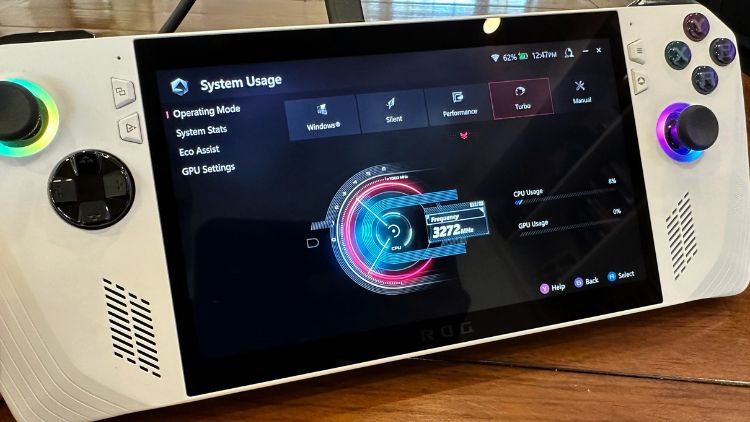
Hardware under the hood
The Ally is powered by the AMD Ryzen Z1 Extreme Processor, which is an 8-core, 16-thread processor that can boost up to 5.10 GHz. The processor is paired with 16 GB of LPDDR5 RAM and 512 GB of NVMe SSD storage, which offers fast and responsive performance. The device also has a dedicated GPU, the AMD Radeon Graphics (AMD RDNA 3), which is a powerful portable graphics card that can handle most PC games depending on the settings you choose.

Armory Crate offers greater level of customization
The Ally comes preloaded, with “Armory Crate” a well-designed, easy-to-use software that made my experience with the device far more accessible. The Armoury Crate suite automatically organizes your gaming library, settings, and content in one convenient spot.
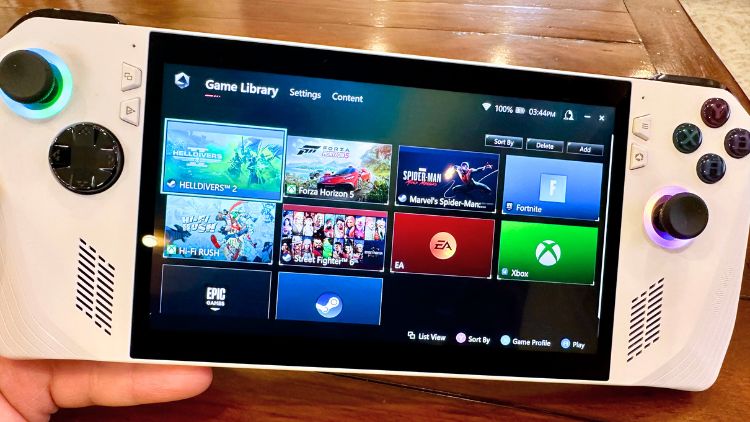
The “Game Library” tab finds all the games on your device, no matter the platform, and organizes them in a visual tile interface. It adds more of a “home console” experience with one click and you are playing. If you are a multi-platform gamer like I am, you’ll love how it unites all your playing experiences in the palm of your hands.
Finding the right balance
The Armoury Crate lets you adjust hardware settings, such as the display brightness, sound, performance and more. You can also monitor the device’s status, such as the temperature, battery level, CPU / GPU usage and beyond. One area I found myself using often was the different “Operating Modes” for the Ally. Just like ASUS does with its ROG line of laptops, you can adjust performance levels to suit your needs. The Ryzen Z1 Extreme APU gets a different amount of power (or TGP) in each mode.

ROG Ally’s different performance modes
The Armoury crate allows you to make changes in a slick, easy to use interface. Silent mode gives it 10W, Performance mode offers 15W, and Turbo mode ups the ante with 25W. You will be able to enjoy higher quality performance with turbo mode, but the battery will drain a lot faster. The opposite is also true: if you decide to use silent mode, your battery will last longer, but your game’s visual fidelity might take a hit with lower frame rates. The hardware features “quick access” buttons on the front of the device that load into the settings and adjust on the fly to help maximize your battery.
ROG Ally’s battery life
The Ally features a 40-Wh battery, which is a decent size for a handheld device. The battery life depends on the settings and type of usage, but on average, you can expect to get around an hour of gaming on high-end settings, and over 3 hours of gaming on lower settings. I found using video streaming services like Netflix and Disney Plus I was able to get almost 6 hours of usage. Battery life is on the short side when it comes to gaming on the go and it’s an area that I would love to see improved.
On the upside, the Ally comes with a 65W PD fast charger to get you powered up quickly. In my testing it charged the device from 0% to just over 50% in about 30 minutes, and from 0% to 100% in about 90 minutes. It offers quick charging which helps to offset some of the battery’s quick depletion issues while gaming.
ROG Ally’s overall versatility
Out of the box, the Ally is compatible with a wide array of different connectivity options. The hardware supports Wi-Fi 6E, Bluetooth 5.2, and USB-C 3.2. The Ally can also connect to other devices, such as a keyboard, a mouse, controller, or a headset via Bluetooth. You can also purchase a ROG Ally Charger Dock which allows you to connect to a TV or monitor while charging at the same time. With this, the Ally can output 4K/60Hz or 1080P/120Hz resolutions through the HDMI 2.0 port TV or monitor with the charger dock (sold separately) allowing you to enjoy a bigger and better gaming experience.

ROG Ally audio performance
The handheld has dual front-facing speakers that delivers clear and crisp sound, especially for its size. The placement of the speakers is quite smart: they are closer to screen and further away from your palms, so they don’t accidently get covered or obstructed by your hands while playing. In an open space the audio levels are quite impressive outputting clear, crisp sound. The hardware also supports Dolby Atmos, which enhances the sound quality and creates a more immersive gaming experience when connected to compatible devices.

Final Thoughts on the ROG Ally
Overall, the ASUS ROG Ally offers a great portable PC gaming experience in the palm of your hands. It has a robust processor, stunning display, and a versatile set of features that helps to unite your gaming on one device. I really like the solid build quality, ergonomic design, and overall value the Ally brings to the table. The coupling of the well-designed hardware with the Armoury Crate software creates a great tandem. Outside of short battery life the Ally is the most versatile PC gaming handheld on the market and my new go to for much of my gaming. If you are looking for a well-designed, compact PC-gaming solution, I highly recommend the ROG Ally.
The ROG Ally is available now on bestbuy.ca.





